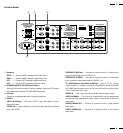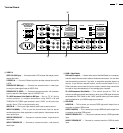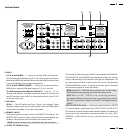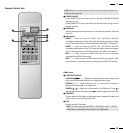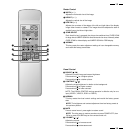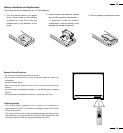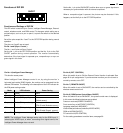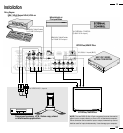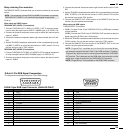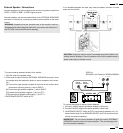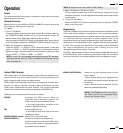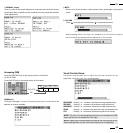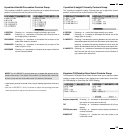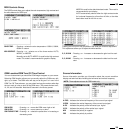
22
21
Connecting Your PC or Macintosh Computer
Connecting your PC or Macintosh computer to your MultiSync XP29 Plus/
XM29 Plus via the MultiCable connection system will enable you to display
your computer's screen image. All of these following display standards are
supported:
VGA 640 x 480 for graphics, VGA 640 x 400 for graphics, VGA 640 x 350 for
graphics, VGA 720 x 400 for text, VGA 720 x 350 for text, SuperVGA 800 x
600, and XGA 1024 x 768, 1280x1024 standards above 60 Hz such as Sun,
Silicon Graphics, HP, workstation standards; Macintosh at 640 x 480, 832 x
624, 1024 x 768, and 1152 x870(XP29 Plus only).
To connect to a PC, Macintosh or computer equipped with a XGA/SuperVGA/
VGA adapter or compatible graphics adapter, simply:
1. Turn off the power to your monitor and computer.
2. If your PC does not support Super XGA/VGA/VGA you will need to install
an XGA/SuperVGA/VGA graphics board. Consult your computer's owner's
manual for your XGA/SuperVGA/VGA configuration. If you need to install a
new board, see the manual that comes with your new graphics board for
installation instructions.
3. Use the supplied MultiCable to connect your computer to the monitor. For a
PC, use the smaller 15-pin connector on the cable to connect to your
computer's video port; use the larger 15-pin connector on the cable to con-
nect to the monitor. For Macintosh, it's just the opposite. Use the larger 15-
pin connector on the cable to connect to your computer's video port; use the
smaller 15-pin connector on the cable to connect to the monitor. (You can
also use your own video cable if you wish. For a PC cable, use the smaller
15-pin connector on the monitor. For a Macintosh cable, use the larger 15-
pin connector on the monitor.)
4. Turn on the monitor and the computer.
NOTE: Refer to your computer's owner's manual for more information
about your computer's video output requirements and any special identifi-
cation or configuring your monitor's image and monitor may require.
Connecting Your VCR or Laser Disc Player
Using a common RCA cable and RCA audio cables (not provided) to connect
your VCR or laser disc player to your MultiSync XP29 Plus/XM29 Plus moni-
tor. To make these connections, simply:
1. Turn off the power to your monitor and VCR or laser disc player.
2. Connect one end of your RCA video cable to the video output connector on
the back of your VCR or laser disc player, connect the other end to the
VIDEO 1 or 2 input terminal(BNC-type) of the monitor. NOTE: You will need
an RCA to BNC adaptor (not included) to convert to the XP29Plus/
XM29Plus monitor. Use standard RCA audio patch cords to connect the
audio from your VCR or laser disc player to your monitor (if your VCR or
laser disc player has this capability). Be careful to keep your right and left
channel connections correct for stereo sound.
3. Turn on the monitor and the VCR or laser disc player.
NOTE: Refer to your VCR or laser disc player owner's manual for more
information about your equipment's video output requirements.
NOTE: S-VIDEO IN terminals will take preference over VIDEO IN termi-
nals when a component is connected to each terminal and VIDEO 1 or 2
selected.
Connecting Your Document Camera
You can connect your MultiSync XP29 Plus/XM29 Plus monitor to a document
camera. To do so, simply:
1. Turn off the power to your monitor and document camera.
2.Use a standard video cable to connect your document camera to the
VIDEO 1 or 2 input terminal(BNC-type) of the monitor.
3. Turn on the monitor and the document camera.
NOTE: Refer to your document camera's owner's manual for more
information about your camera's video output requirements .
Connecting Your NEC IDC Series Scan Converter
You can connect an NEC IDC series scan converter to the monitor to improve
the quality of your video images. To do so:
1. Turn off the power to your monitor and scan converter.
2.Use a cable (RGB HV 5 conductor BNC/BNC) supplied with the scan
converter to connect the RGB 2 inputs of the monitor.
3. Turn on the monitor and the scan converter.



